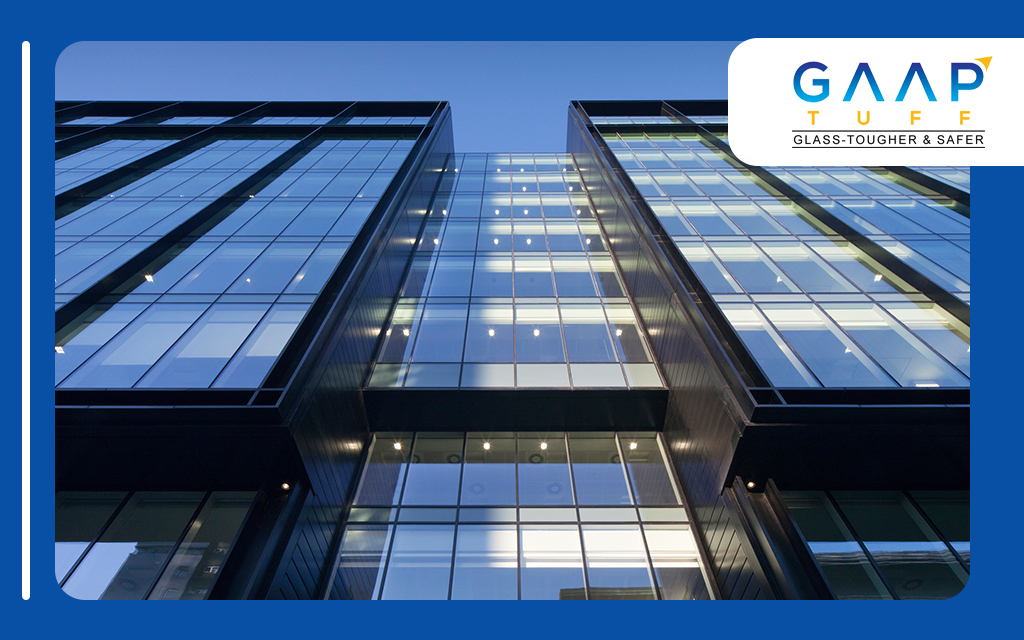Sustainable design relies heavily on cutting down on energy consumption. A great deal of glass is used in modern architecture to create stunning structures that let in a lot of natural light. Eighty per cent of the heat from the outside can be absorbed by ordinary glass.
The Thermal performance of glass, on the other hand, reduces heat ingress while allowing more light to pass through. The shading coefficient (SC) measures the solar heat gain that the glazing can absorb. The glazing performs better at preventing solar heat gain when the shading coefficient is lower.
Some high-performance glass properties are:
- Building facades use such glasses on the exterior to reduce the need for air conditioners.
- High-performance glass windows are the primary source of heat in a home. These high-performance glass windows are used to reduce the rate at which heat enters a building.

Solar Control Glass
Solar heat and glare are reduced by using this special oxide-coated glass. Natural light is still allowed to pass through, but the sun’s glare and heat are significantly reduced.
Due to the diffused nature of this light, there is less of a need for artificial lighting during the day. Solar control glass shields your home’s interiors from infrared (IR) rays.

Low E Glass
Low emissivity glass, also referred to as low-E glass, provides excellent thermal insulation. The solar light can pass through, but most of the sweltering heat is reflected away.
UV and IR rays can be harmful to your buildings’ interiors, but this type of high performance glass protects them from the harmful rays.
Energy-efficient glass price being around ₹210 per square foot, this glass can be placed in most commercial areas.
Some energy-efficient glass uses are:
Various metal oxides are used to coat energy-efficient glass panes, reducing the excessive absorption of solar heat. Energy costs and carbon footprints can be reduced by this method. This type of glass also enhances thermal comfort and provides a sense of openness for workers inside.

Solar Control – Low E Glass
Using Low-E glass can result in overheating, especially if it is placed directly in the path of the sun’s rays. When exposed to direct sunlight for an extended period, low-E glass or solar control glass may not be sufficient on its own.
To avoid overheating or undercooling, solar control-low E glass is the ideal solution in these cases. It blocks solar radiation while also providing the perfect amount of thermal insulation.
Conclusion
The high-performance glass allows for increased daylight inclusion without increasing energy costs, which can be said without a doubt. GAAP TUFF GLASS is the place to go for high-quality, energy-efficient glass solutions.

